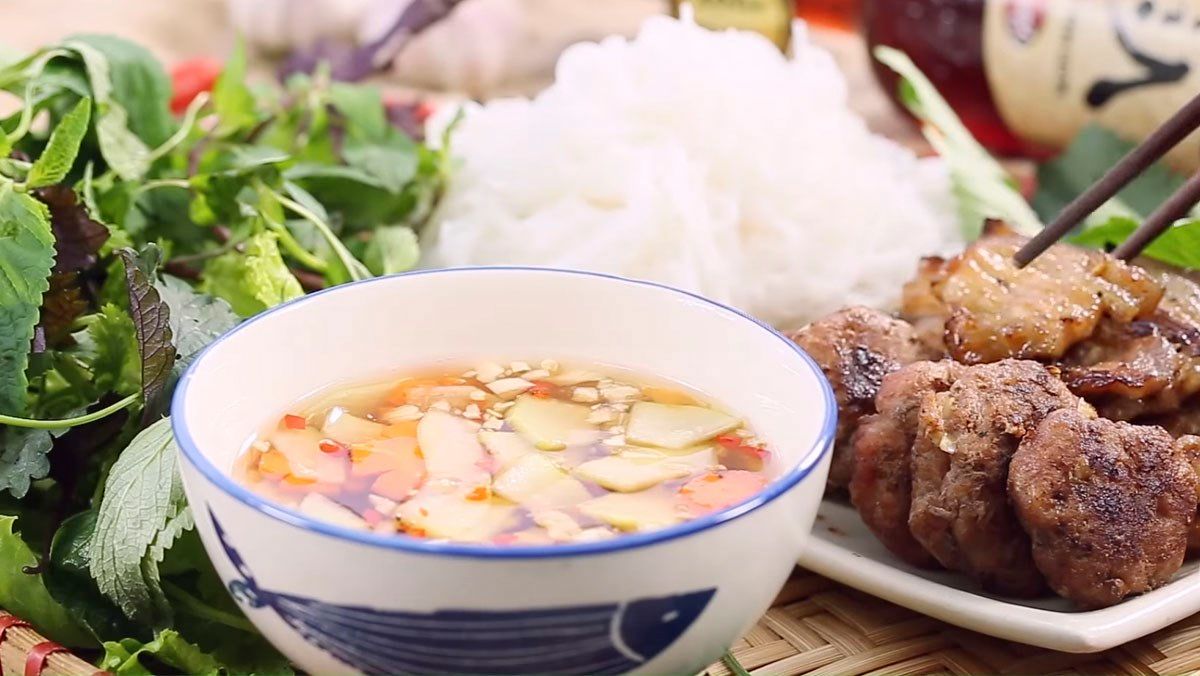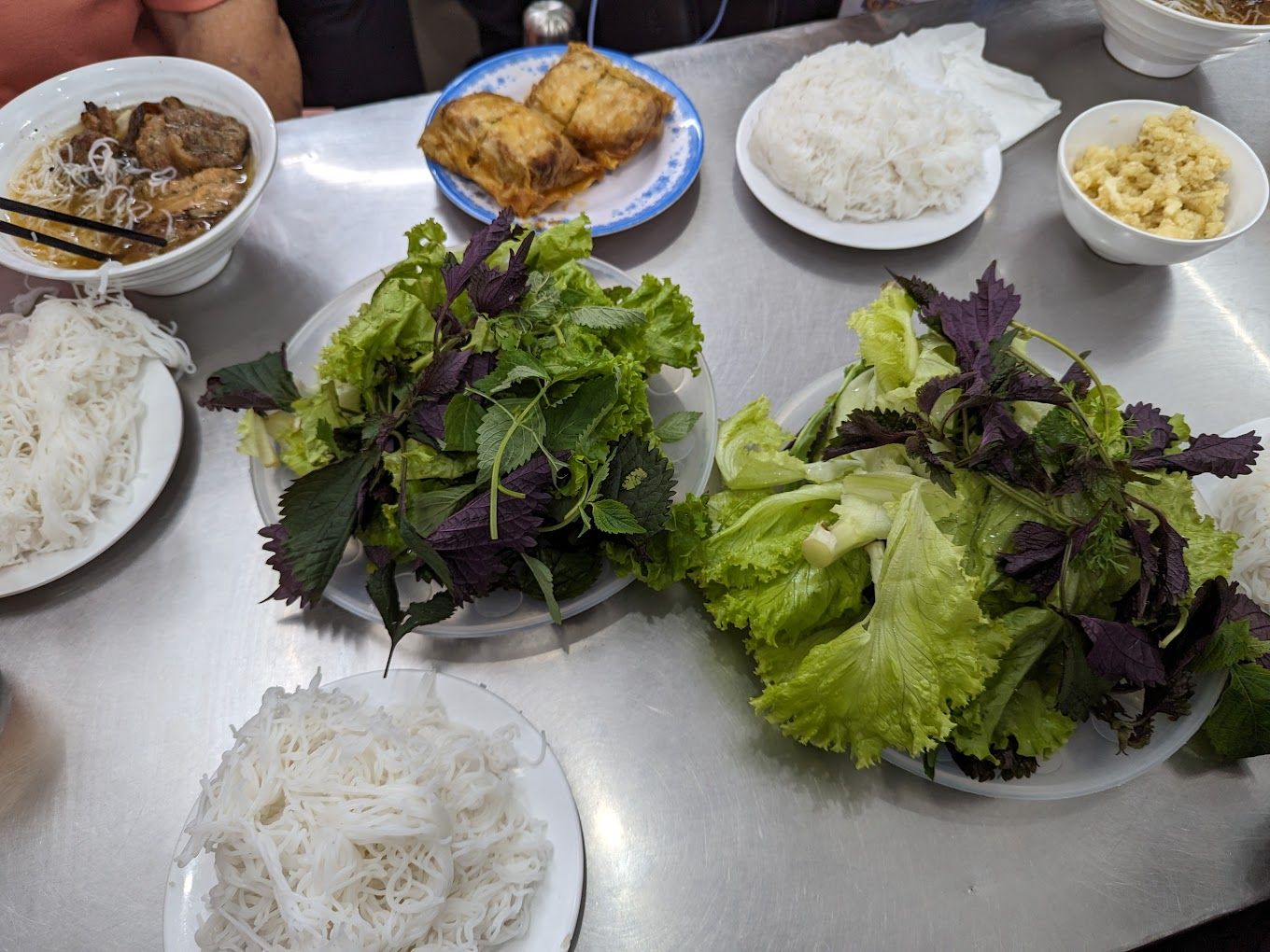What is Bun Cha?
Hanoi and Vietnam is famous for the Pho (Noodle Soup), but there’s another food that truly introduces the city’s long cuisine and is celebrated as a unique food of the capital, “The Bun Cha”, or bun cha Hanoi. This favourite dish is a very popular one served mainly during the lunch time and it is one of the best dishes locals would introduce to the foreigners.
So, what is the Bun Cha: The grilled pork patties sizzling over charcoal served with rice noodles, and variety of freshly picked vegetables served with a papaya sauce. This Vietnamese Food originated in Hanoi and is a very popular street food you should not miss it. Check out North Vietnam in December

Why's Bun Cha so popular?
Bun cha Hanoi, is a popular street food with its exact origins unclear. Over time, its popularity grew, moving from street corners to restaurant menus and eventually spreading to towns and cities around Vietnam and served by Vietnamese overseas restaurants around the world.
This popular food stepped into the global spotlight in 2016 when the late Anthony Bourdain and former U.S. President Barack Obama shared a meal of bun cha during their visit to Vietnam. This moment turned bun cha into an international sensation, even earning it the nickname “bun cha Obama.”
More recently, bun cha has gained prominence on the world stage, featuring in Queen Elizabeth II’s Platinum Jubilee Cookbook in 2022 and winning the hearts of diplomats like French Ambassador Olivier Brochet.
How to make Bún chả?
At first, bun cha might not seem as impressive as pho or bun bo Hue (Two Other famous Vietnamese Food). Its ingredients, easily sourced from any wet market year-round, appear simple. Unlike other traditional dishes, bun cha doesn’t demand hours of cooking or a complex mix of spices and condiments. Yet, its taste lies in the harmonious blend of flavors, aromas, and textures—a true reflection of Hanoi’s deep-rooted culinary tradition. To truly understand bun cha, let’s explore its four secrets;
- Smoky grilled meat
- Favored papaya sauce
- Fresh rice vermicelli
- Fresh vegetables.
Grilled meat
Pork patties and pork slices are the two forms of meat used to prepare the smoky meat used in Bun Cha. To mke it tender and juicy, pork belly and lean shoulder are ideal part of the meat.
Thin slices of pork and ground meat are marinated in a mix of shallots, garlic, chili, fish sauce, sugar, and eggs, then let it aside for 2-3 hours to get them marinated well. For the patties, wrapping them in betel leaves before grilling over charcoal infuses them with a distinct smoky, herbal aroma while locking in moisture.
Dipping sauce
The dipping broth is a flavor of this food. Unlike traditional dipping sauces, this broth offers a lighter, more delicate taste with a watery consistency with slices of papaya in it. It’s crafted by blending fish sauce, vinegar, lime juice, sugar, and water in just the right proportions to create a harmonious balance of sweet, sour, salty, and spicy notes. Once the base is ready, minced garlic and chili are mixed in for extra taste. To complete the broth, crunchy pickled carrots and slices of green papaya or chayote are added, giving it a refreshing texture and extra dimension.
Rice vermicelli
Rice vermicelli cut into small, bite-sized bundles slightly sticky without clumping, and carry a light, natural aroma of rice powder. A good batch of vermicelli should avoid any overly sour taste, focusing instead on its delicate, fresh flavor. To serve, dip the noodle in dipping sauce and and enjoy it with Bun Cha.
Fresh vegetables
A combination of lettuce, coriander, mint, perilla, Thai basil, and bean sprouts adds an extra taste ad aroma to the whole dish.
Bun Cha variations
The Bun cha originates in Hanoi and nowadays, it serves pretty much everywhere in Vietnam. The ingredients, dipping sauce and rice noodle served with this food is the same everywhere you eat it. Here are few different variation of this popular food;
Wrapped on betel leaves
Because it’s a street food and you likely eat it while sitting at the iconic plastic tables along Hanoi’s sidewalks, you’ll see a unique feature: grilled meat skewered on bamboo sticks instead of metal ones, as commonly used in Ho Chi Minh City (Saigon). In Hanoi, pork patties are wrapped in betel leaves before grilling, adding a signature herbal flavor, unlike the unwrapped patties found in Saigon. Additionally, the pork patties in Saigon tend to be noticeably larger than their Hanoi counterparts.
Serving with fresh garlic
In Hanoi, many restaurants offers separately minced fresh garlic on the table, while in the South, sliced pickled garlic is more commonly offered. This preference likely arises from Southerners’ love for pickled and fermented foods, which thrive in the hot, humid climate and are better preserved that way.

When's the best to eat Bun Cha?
Traditionally, people in Hanoi enjoy this food only for lunch. For breakfast, locals typically choose quick grab and eat like banh mi or banh cuon. Today, most bun cha restaurants stay open all day, so tourists can enjoy this dish whenever it fits their schedule.
How to eat bun cha?
If it’s your first time trying this street food, here is what you get, once you ordered, you’ll be served wit a bowl of dipping sauce with grilled meat, a plate of rice vermicelli, and a small plate of fresh veggies.




